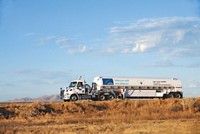Advertisement
Grab your lab coat. Let's get started
Welcome!
Welcome!
Create an account below to get 6 C&EN articles per month, receive newsletters and more - all free.
It seems this is your first time logging in online. Please enter the following information to continue.
As an ACS member you automatically get access to this site. All we need is few more details to create your reading experience.
Not you? Sign in with a different account.
Not you? Sign in with a different account.
ERROR 1
ERROR 1
ERROR 2
ERROR 2
ERROR 2
ERROR 2
ERROR 2
Password and Confirm password must match.
If you have an ACS member number, please enter it here so we can link this account to your membership. (optional)
ERROR 2
ACS values your privacy. By submitting your information, you are gaining access to C&EN and subscribing to our weekly newsletter. We use the information you provide to make your reading experience better, and we will never sell your data to third party members.
Greenhouse Gases
Carbon dioxide industry stresses about supply
Sequestration may pull carbon dioxide from an already tight merchant market
by Craig Bettenhausen
October 11, 2023
| A version of this story appeared in
Volume 101, Issue 34

Carbon dioxide is a foe in the fight against climate change, but it’s also an essential material for several critical industries, including refrigeration, food, and beverages. Shortages in recent years caused by the pandemic and the war in Ukraine already have gas traders, equipment makers, and users stressed. Now the industry is concerned that CO2 sequestration will squeeze supplies even further.
About 75% of the US CO2 market, excluding uses by the oil and gas industry, is supplied by CO2 generated from making ethanol, ammonia, and hydrogen. But new mandates and tax credits are creating an economic incentive for companies to inject their CO2 underground for sequestration instead. In many cases, the tax credits price traditional buyers out, a market distortion that has users and suppliers worried about getting what they need.
At the North American CO2 Summit, hosted in Indianapolis last month by the publishing group Gasworld, Rich Gottwald, CEO of the Compressed Gas Association (CGA), urged attendees to become more vocal with the public and policymakers about their needs and contributions. CO2 was cheap and readily available for a long time, he said, and the industry was able to go about its business without much fuss. “Being invisible no longer serves our best interests,” Gottwald said.
The CGA is lobbying the US Congress for tax code changes that would give CO2 use as much in tax credits as sequestration gets. Gottwald told C&EN that his group does not represent fossil fuel companies, which use CO2 to force oil and natural gas out of otherwise-depleted wells, and it has no position on that use of CO2.
New sources of CO2 are coming online, including expanded capture at factories and power plants and capture of by-product from biomethane facilities. But Gottwald expects the vast majority will be sequestered. That could be fine, he said, if what’s not sequestered can get to the industries that need it.
At the conference, Jeff Holyoak, vice president for sales and market development at the CO2 and dry ice equipment seller TomCO2 Systems, summed up the industry sentiment: “CO2 is too important to the economy to stick in the ground.”





Join the conversation
Contact the reporter
Submit a Letter to the Editor for publication
Engage with us on Twitter